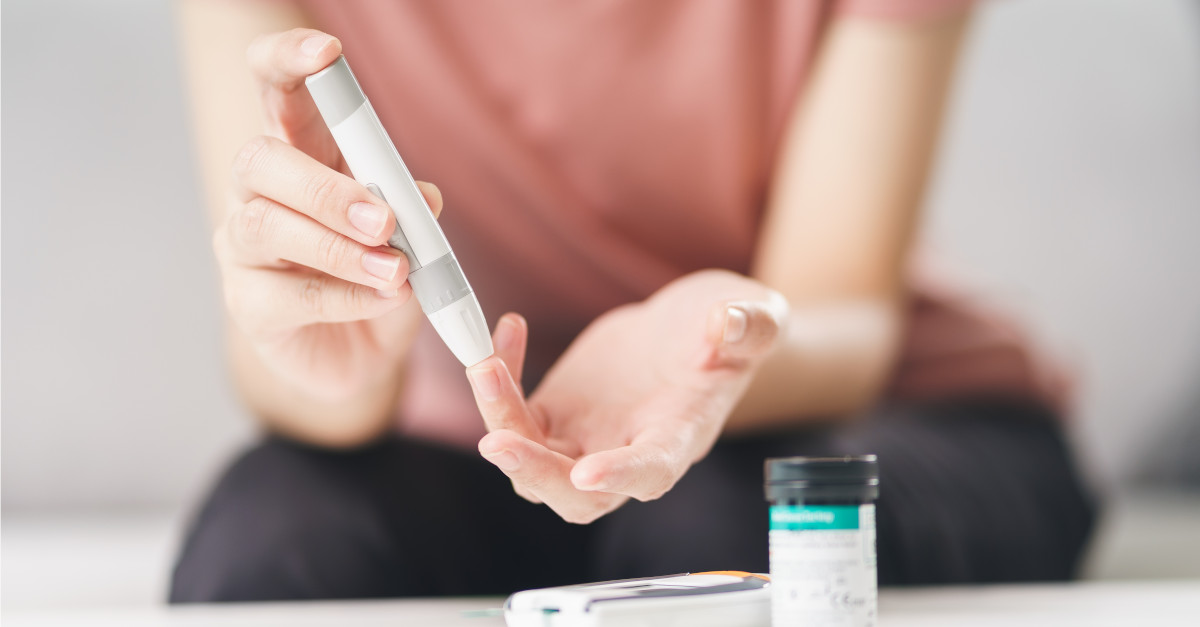Diabetes is a chronic illness that impacts the body’s process of turning food into energy. Normally, food is broken down into sugar (glucose), which is then released into the blood. As blood sugar levels rise, the pancreas produces insulin, a hormone that helps your cells derive energy from glucose.
For those with diabetes, the body either doesn’t use insulin as it should, or is unable to produce enough of it. Blood sugar can therefore rise to unhealthy levels. Fortunately, there are ways to prevent this from happening.
In honor of National Diabetes Month this November, we’re highlighting some essential information about this condition, including signs to watch for and possible risk factors.
Signs & Symptoms of Diabetes
One concerning factor about diabetes is that it doesn’t always present noticeable symptoms. In type 2 diabetes, for instance, people may either develop symptoms so mild that they go overlooked, or they may have no symptoms at all. It’s more common for people with type 1 diabetes, which is usually diagnosed during childhood or adolescence, to develop severe symptoms that can come on abruptly.
In either type, symptoms of diabetes may include:
- An increase in thirst and/or appetite
- Blurred vision
- Losing weight without trying
- Fatigue
- Increased urination
- Dry skin
- Numbness or tingling in the extremities
- Recurring infections
Diabetes Risk Factors
Usually, type 2 diabetes starts with insulin resistance. This condition occurs when certain cells in your body can’t process insulin as they should. Your pancreas then responds by trying to produce more insulin. At first, it may be able to generate a sufficient amount to compensate for the cells’ weak response. Over time, however, your body simply may not be able to keep up with demands, and blood sugar levels can spike dangerously — leading to type 2 diabetes.
If you have a mild amount of insulin resistance, but are still able to produce enough to keep blood sugar levels within a healthy range, this is known as prediabetes. This condition can often be reversed through lifestyle changes, and diabetes may be avoided altogether.
People with certain genetic and lifestyle factors are more likely to experience insulin resistance or prediabetes. These factors include being over the age of 45, being physically inactive, being overweight or obese, having a direct relative with diabetes, and having certain health conditions, such as high blood pressure, high cholesterol, heart disease, or polycystic ovary syndrome. Some ethnic and racial groups also have higher instances of diabetes, including American Indians, Asian Americans, African Americans, Alaska Natives, Native Hawaiians, Pacific Islanders, and Hispanics/Latinos.
Type 1 diabetes is believed to be caused by an autoimmune response. While having a family history of type 1 diabetes is one known risk factor, there are no other clear factors within your control to prevent.
Another type of diabetes that is difficult to predict or control is gestational diabetes, which is believed to be related to hormone changes caused by the placenta during pregnancy.
“Gestational diabetes does share some similar risk factors to that of type 2 diabetes,” explains Rick A. Brewer, MD, FACEP, Chief Medical Officer at Morgan Medical Center, “including being overweight or obese, not being physically active, having a family member with diabetes, having polycystic ovary syndrome, and being of an at-risk race or ethnicity.”
Researchers still aren’t sure why some women get gestational diabetes and others don’t. Note that it’s possible to have gestational diabetes without known risk factors, just as it’s possible to avoid it even if you have several risk factors, which is why screening can be important.
Whether you’re living with a chronic illness like diabetes or you’re simply seeking a partner for all your wellness needs, visit your primary care provider or turn to our Outpatient Clinics, conveniently located inside Morgan Medical Center, for top-notch healthcare. Call us at (706) 438-1275.

